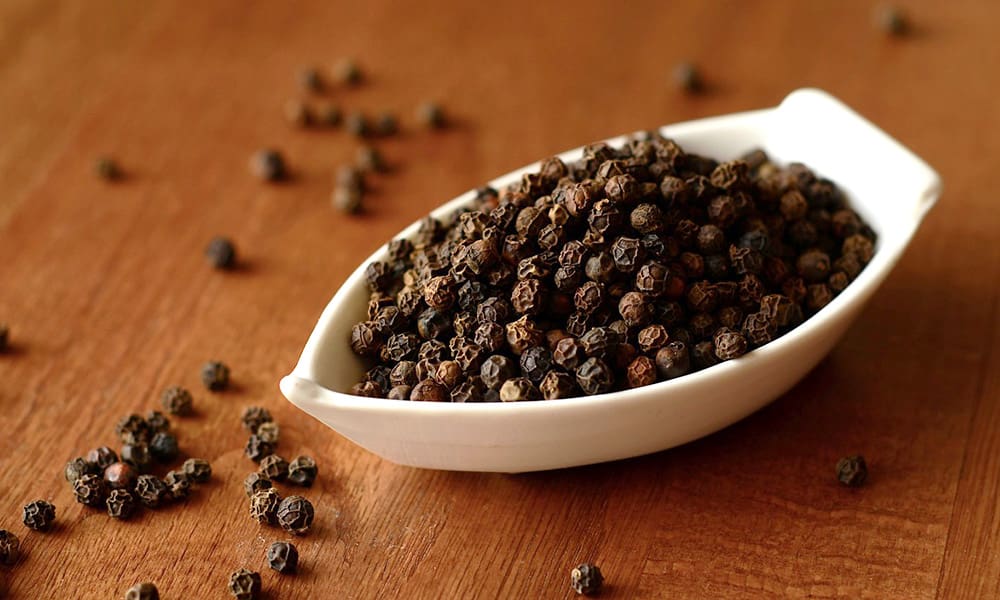Want to spice up your life here in the tropics? Why not try growing black pepper in the home garden? Native to India, pepper is prized as a spice and has played an important role throughout history. In ancient Greece, pepper held such high prestige that it was used not only as a seasoning but also as a currency and sacred offering.
Pepper was prized because it could spice up bland foods and disguise a food’s lack of freshness, the latter being an especially important quality in times before efficient means of refrigeration. In colonial times, pepper played an important role in the spice trade. Today, black pepper has become a commercial crop in Costa Rica.
Black pepper (Piper nigrum) is a perennial vine producing berry-like, aromatic, pungent fruits. Known in Spanish as pimiento negro, it belongs to the Piperaceae family. The heartshaped leaves are thick and shiny green, while the flowers are white and produce fruits on short, hanging spikes 4-12 centimeters long. The berry-like fruits are green when unripe and become red at maturity.
The different types of pepper available on the market, such as black pepper, green pepper and white peppercorns, are actually the same, but represent different stages of development and processing methods. Black peppercorns are made by harvesting the pepper berries when they are half ripe and just about to turn red.
They are then left to dry, which causes them to shrivel and become black in color. Green peppercorns are picked while still unripe. White peppercorns, however, are picked when very ripe and later soaked in brine to remove their dark outer shell, leaving just the white pepper seed.
Many leading nurseries around the country offer pepper plants, although you may want to propagate your own plants from stem cuttings. Select planting material from high-yielding plants with three to five internodes. These are rooted in sandy soil in shady conditions.
Insert the cutting at a 45-degree angle, 10 cm deep and 15 cm apart.When the cuttings have developed four to seven new leaves, they are ready for transplanting to their permanent sites, at least two meters apart.
Although black pepper grows in almost all types of soil, it thrives in well-drained loam soil fortified with organic compost. It is best suited for humid climatic conditions, with rainfall of at least 250 cm in coastal and midrange zones of the country. Irrigation is recommended in areas with a long dry season.
Black pepper plants need posts or living trees to support their climbing vines, as well as weeding, mulching and pruning. When seedlings reach one or two feet high, prune off the top of the leading vine to induce more branching.
Black pepper is not prone to any serious diseases or pests, but leafhoppers and root grubs can cause minor problems.
Peppercorns mature in five to six months and can be dried in the sun on a mat. The seed spikes are separated from the corns by winnowing and then stored in a cool, dry place.
For information on obtaining pepper cuttings and cultivation techniques, check with your local Agriculture Ministry office.
Black pepper stimulates the taste buds in such a way that it increases hydrochloric acid secretion in the stomach, thereby improving digestion.
However, excessive use may cause irritation of the stomach lining. Black pepper is recognized as a carminative, or a substance that helps prevent the formation of intestinal gas, as well as a diaphoretic, which promotes sweating, and a diuretic, promoting urination.






